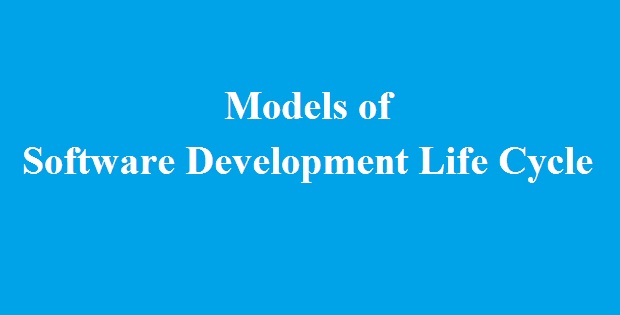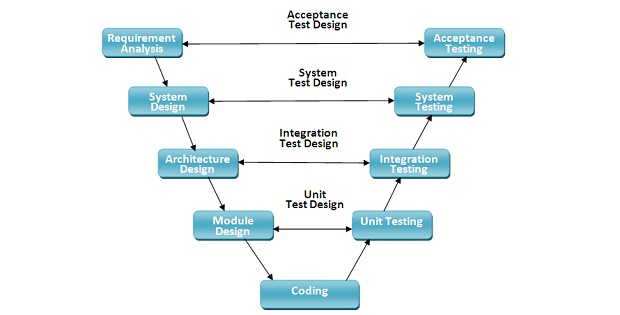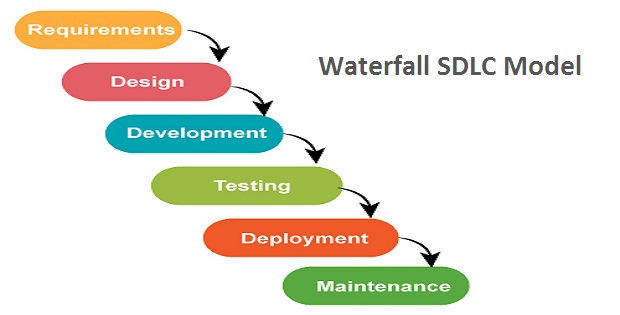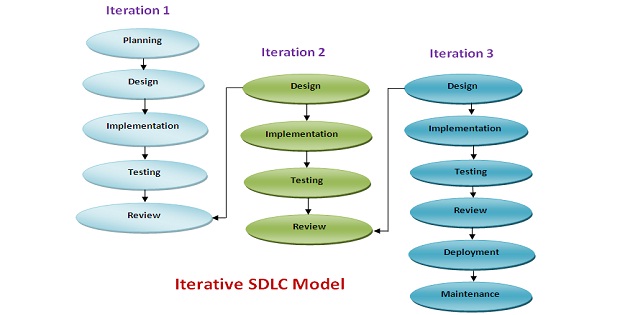Models of Software Development Life Cycle: Importance of SDLC
Last Updated on 2 months by Touhid
Software development life cycle (SDLC) is an organized methodology that defines required activities in software development projects. There are different models of software development life cycle to develop software.
The main aim of SDLC is to develop quality-based software and ensure the quality of the software according to customer requirements. In this post, we’ll discuss different models of SDLC with their advantages and disadvantages.
So, keep reading on the topic.
Table of Contents
Models of Software Development Life Cycle
Software Development Life Cycle or SDLC is a software development framework that defines required steps to develop standard and quality-based software. The models of software development life cycle are very important to developing software or applications.
It meets the client’s requirements and ensures correctness and timely delivery to the client. The SDLC consists of different phases to develop software or applications, which are as follows:
- Requirement analysis
- Planning
- Design
- Development
- Testing
- Deployment and
- Maintenance
A software development life cycle model is a process that is selected before software development. There are different models of software development life cycle, which are as follows:
- Waterfall model
- Iterative model
- Spiral model
- V-shaped model
- Agile model

Now, we will discuss each type models of software development life cycle with their advantages and disadvantages.
1. Waterfall Software Development Model
The waterfall model is the model of the software development life cycle, where the software development process is divided into different phases. The output of one phase works as input for the next phase. The development of the next phase starts only when the previous phase is complete.
The Waterfall model is also known as the linear sequential model. There are six sequential phases in the Waterfall model, which are as follows:
- Requirement analysis
- Design
- Development
- Testing
- Deployment and
- Maintenance
Requirement Analysis
Requirement analysis is the first phase of the Waterfall software development life cycle which defines the system inputs, processes, outputs, and interfaces. In this phase, all the possible business requirements are gathered and documented in a software requirement specification (SRS).
Design
The software requirement specifications are studied in this phase and system design is prepared based on those requirements. It specifies the required hardware, system requirements, and overall system architecture of the software.
This system design phase covers the technical design requirements such as programming language, database, services, and high-level technical details of the project. Finally, the work is documented as a Software Design Document (SDD).
Development
In this phase, system design is converted into source code using any suitable programming language. Here, each module of the software is developed and checks whether the module is working correctly or not (Unit Testing).
Testing and Integration
The testing and Integration phase is a very important phase of the software development life cycle which ensures the quality and efficiency of the software. When the development of each module is done, then all modules are integrated into a system following the testing process.
Here, each module is tested for their interactions with each other module. System testing consists of different types of testing activities such as alpha testing, beta testing, and acceptance testing. This phase performs all the testing activities to make sure that the system meets the software requirements specification.
Deployment
Now, it is time to deliver the software to the customer. Once the functional and nonfunctional testing is done and there is no error, the software is deployed in the customer hosting environment. It will ensure that the software is up and running in the customer environment.
Maintenance
It is another important phase of the software development life cycle. This phase will start when the software has been delivered, installed, and operational in the customer environment.
During this phase, if the software does not run properly or finds any problem, the developer shall fix the problem and the updated in server. The developer also enhanced the software with more features and released better versions to improve the software quality.
Advantages of the Waterfall Model
The advantages of the Waterfall model are as follows –
- It allows departmentalization and control.
- It is very simple and easy to understand.
- Easy to manage and use.
- It is suitable for small projects where requirements are easy to understand.
- Each phase has a specific deliverable.
- Each phase is well-defined.
- Easy to arrange tasks.
- Process and results are well documented.
Disadvantages of the Waterfall Model
The main disadvantage of the Waterfall model is that it is a time-consuming process and very difficult to go back to the previous stage. However, the other disadvantages of the Waterfall model are as follows –
- It provides low flexibility.
- Difficult to measure progress within stages.
- Very difficult to estimate time and cost.
- It is very difficult to go back to the previous phase.
- Not suitable for long and ongoing projects.
- Requirements changing is very difficult while developing.
- Not a good quality model for complex and object-oriented applications.
- It is also not suitable for projects where requirements are at high risk of changing.
If someone asks me, which model is the best for software development? My answer is be the best model of software development life cycle is the waterfall model if the project size is small.
2. Iterative Development Model
The Iterative model is also called an incremental model which is designed to improve the existing waterfall model. This model is almost the same as the previous waterfall model except a few changes are made to increase the effectiveness of the software development.
There are several phases of the Iterative Model such as planning, design, implementation, testing, deployment, review and maintenance phase.
Once the initial requirement planning process is completed, the other phases are repeated to make new versions of the software for every cycle. The requirements are included, designed, coded, tested and added to the software on each iteration.
Planning
This is the first stage of the iterative model, where the system-related information is gathered from customers and analyzed. Then, proper planning is done after collecting the requirements.
Design
In the design phase of the iterative software development model, the developer team designs the different diagrams of software such as the data flow diagram (DFD), activity diagram, class diagram, and state transition diagram.
This design phase covers the technical design requirements such as programming language, database models, business logic and high-level technical details of the project.

Implementation
The third and most important phase of the iterative model is software implementation. In the implementation phase, the planning, specification, and design phases are transformed into source code. Here, each module of the software is developed and checks whether the module is working correctly or not (Unit Testing).
Testing
After completion of the implementing phase, the software starts testing using different testing methods. In this phase, each module of the software is tested for its interactions with another module. System testing consists of different types of testing activities such as alpha testing, beta testing, and acceptance testing.
This testing stage allows users to identify any potential bugs and make sure that the system meets the software requirements specification.
Learn more about System Penetration Testing.
Deployment
Once the testing is done and the software is deployed in the customer hosting environment.
Review
When the software is deployed in the customer environment, the review phase is checked as per the current requirements. If there is any error or need to change any requirements then the process starts for the next iteration.
Advantage of Iterative Model
The advantages of the iterative model are as follows:
- The software can develop quickly.
- Changing the software requirements is more cost-effective.
- It is more flexible to change the software scope and requirements.
- Each iteration is easily managed.
- Risks are identified on each iteration and resolved during the next iteration.
- It takes corrective action in a limited financial plan.
- Results are obtained early and periodically.
Disadvantage of the Iterative Model
The disadvantages of the iterative development model are as follows:
- It requires more resources.
- Although changing the software requirements is cost-effective, it is not suitable for changing the requirements.
- It also requires more management and highly skilled resources for risk analysis.
- The Iterative Model is ineffective for small projects.
- Finally, the project ending date is not confirmed because of changing the requirements.
3. Spiral Model
The spiral model is another model of the software development life cycle which is a combination of the iterative model and the waterfall model. The Spiral model is used for large projects. It is based on the risk-driven process model where the project’s success depends on the risk analysis phase.
The spiral model generally consists of four different phases such as planning, risk analysis, engineering and evaluation. These phases are followed repeatedly, in each round, until no further requirements are needed to be implemented in the final products.
Planning
Planning is the first phase of the software development life cycle (spiral model), where the business and system-related information is gathered from customers and analyzed. Then, proper planning is done after collecting the requirements.
The planning phase includes the estimated cost of the project, schedule and resources for the iteration.

Risk Analysis
In the spiral model, the Risk Analysis phase identifies, estimates, and monitors the technical feasibility, and management risks and finds out alternate solutions to the project. If any risk is found during the risk analysis then necessary steps are taken to reduce the risks and alternate solutions are implemented.
However, a standard prototype is developed at the end of the risk analysis phase.
Learn more about How to reduce Cyber Risks.
Engineering
When the planning and risk analysis phase is finalized then the engineering phase will start for developing the software. In the engineering phase, the software is developed, tested, and deployed in the customer environment.
Evaluation
This is the last phase of the spiral model. In this phase, customers evaluate the output of the project and provide feedback also revert if any changes are required. The evaluation phase includes all the above phases, where the customer goes through each phase to evaluate the software. At last, the project continues to the next spiral or iteration.
Advantages of the Spiral model
The advantages of the Spiral development life cycle are as follows:
- This model is useful for large projects
- It provides Flexibility to change the requirements
- Software development is very fast
- It provides strong approval and documentation.
- The features are added systematically.
- The spiral model facilitates risk management
Disadvantages of Spiral model
The disadvantages of the Spiral model are as follows:
- It requires expert people to identify the risks of the project.
- The project completion date may not be known early.
- It is not suitable for smaller projects.
- The spiral model is costly to develop a project.
- It is more complex than other models.
4. V-Shaped Software Model
A V-shaped model is a models of software development life cycle which directly includes a set of verification and validation steps for every single phase in the development cycle.
It is an extension of the waterfall model and it is also known as Verification and Validation model. The process of the V-model is in a sequential manner which means the next phase starts only after the completion of the previous phase.

Verification
Verification is the process of evaluation, where requirements specifications and design meet for software development. There are several Verification phases in the V-Model, which are described as follows:
Requirement Analysis
Requirement analysis is the first Verification phase in the V-Model, where all possible business and system requirements are gathered. This is a very important phase of the software development life cycle because most of the customers do not what exactly they desire.
In the requirements analysis phase, acceptance tests are designed to be implemented later during software testing phases.
System Design
In this phase, software requirement specifications (SRS) are studied, and prepare system design based on the requirements. This system design phase covers the technical design requirements such as programming language, database, and services. During this phase, system tests are designed for later use in the testing phases.
Architectural Design
The architectural design consists of modules, their functionalities, interfaces, database relationships, architecture diagrams, and technology details. It is also referred to as High-Level, which creates a blueprint for the hardware, software and network diagram of the system.
The high-level design focuses on overall system architecture and design which provides an overview of solution, platform, service, and process. An Integration test plan is developed in this phase to test the ability of the software.
Module Design
In the module design phase, the high-level design is broken down into small modules and programs, where the internal design for each module is specified. It is also referred to as Low-Level Design (LLD), which defines the business logic for every component of the system.
Module design is important because the design is compatible with the other modules and external systems. The unit test is designed during this phase to eliminate the faults and errors at an early stage.
Coding
The coding Phase is the last and bottom of the V-shape model. In this phase, the module’s design is converted into source code using any suitable programming language based on the coding guidelines and standards. The coding is done by software developers or programmers.
Here, each module of the software is developed and testing is performed by the developers to check whether the module is working correctly or not.
Learn more about How to avoid Malicious Code?
Validation
Validation is the process of evaluating the software (after the completion of the development phase) to determine whether the software meets the customer’s requirements.
The validation phases in a V-Model are as follows.
- Unit Testing: In the V-shaped Model, the Unit Test Plans (UTPs) are designed during the module design phase. These UTPs are executed at the code level and ensure that all potential bugs or errors are removed at an early stage.
- Integration testing: The integration testing is developed during the architecture design phase. Here, the modules are integrated and ensure that all modules and architectural designs are correct. In integration testing, the system is tested by verifying the communication between all modules within the system after adding any new functions.
- System Testing: System testing is associated with the system design phase of the V-model. The System testing tests the complete application such as functional and non-functional requirements, interdependency, communication, and performance testing of the application.

- User Acceptance Testing (UAT): The final testing phase of the V-model is acceptance testing, which is designed at the requirement analysis phase. The user acceptance testing is performed in a user environment. It ensures that the delivered system meets the customer’s requirement and the system is ready for deployment in a customer environment.
Advantages of V-Shaped Model
The advantages of the V-Model are as follows −
- The V-Model is simple and easy to use.
- It is a highly disciplined model.
- The model is easy to manage.
- This model improves the reliability and quality of the software.
- Each phase has specific output and a review system.
- It is suitable for small projects where requirements are easily understood.
Disadvantages of V-Shaped Model
The disadvantages of the V-Model are as follows-
- The model does not provide flexibility to change the requirements.
- It is not a good quality model for complex and object-oriented projects.
- It is very expensive to change the requirements.
5. Agile Software Development Model
The agile model is the models of the software development life cycle which is a combination of the Iterative and Incremental model. The agile model focuses on flexibility while developing software.
The main aim of the Agile Model is to complete the project very quickly and improve the quality of an application. In this model, the application is broken into small incremental builds and the builds are given in iterations.
The time duration for each iteration is about one to three weeks. Every iteration involves cross-functional teams working through a full software development life cycle including:
- Planning
- Requirements Analysis
- Design
- Coding
- Unit Testing and
- User Acceptance Testing (UAT)
The product is displayed to the customers for their feedback after the end of the iteration. Customer feedback is playing an important role in the software development life cycle because their feedback will be helpful for the next iteration.
The feedback will also ensure that the features meet their requirements. To minimize the risk of the application testing is done on every development iteration.
Advantages of Agile Model
The advantages of the agile model are as follows –
- This model is a realistic approach to software development.
- It requires minimum resources.
- This model provides flexibility to developers.
- Easy to manage.
- Customers can change their requirements at any stage.
Disadvantages of the Agile Model
The disadvantages of the agile model are as follows –
- It does not work for small projects.
- It requires expert persons to make important decisions in the meeting.
- Cost is slightly more as compared to a waterfall or interactive model.
- If the project manager is not clear about the requirements, then the project can go out of the way.
Importance of Software Development Life Cycle
The models of software development life cycle are very important to developing software or applications. The main importance of the software development process is that it provides full control of the software development and ensures that the developed software meets the customer’s requirements.
However, the other important models of SDLC are as follows:
- The SDLC model provides a standard framework for developing software.
- It provides the goals and deliverables of the software.
- Customer requirements are found at an early stage.
- To find out the bugs and errors in the software before implementation.
- It ensures that the software will be delivered to the customer.
- The SDLC model provides a guideline for developing software.
- It ensures the security of the software.
Learn more about Cyber Security threats.
Best Models of Software Development Life Cycle
What are the best models of software development life cycle? It depends on the different factors of the project such as project requirements, size of the project, software developers, business environment, time, and cost.

The waterfall model is the best model of the software development life cycle if the project size is small, where the requirements of the software are fixed, easy to collect and the organization has experience with related projects.
On the other hand, the agile model is the best model of the software development process if the project size is large, where clients can change their requirements at any stage of the software development process even if the initial planning phase has been completed.
This agile method allows more flexibility than traditional methods, it reduces the risks and saves the time and cost of the software development.
Conclusion
Finally, we have discussed different models of the software development life cycle with their advantages and disadvantages and mentioned the importance of the software development life cycle. Hope the article “Models of software development life cycle” will be helpful for, those who want to develop software !!!






